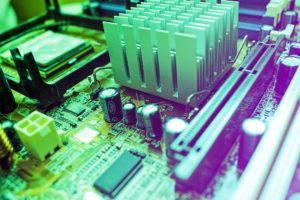What is hardware design?

Hardware design is the creation of anything that is hardware-related. This includes the design of circuit boards, the planning and assembling of mechanics, and the development of programming languages for them. Hardware engineers are involved in the creation of hardware that is used for anything from communication devices to heating and cooling systems. Hardware engineering is also known as electrical engineering. Some tasks that hardware engineers can do are to write software for the device, design the outside of the device, plan out the equipment needed to produce the device, and oversee the production of the device.
Hardware design is the exact opposite of software design. Instead of making a plan and making it functional, hardware design requires existing, working plans and turning them into something that a user can use, see and touch. This is a much more technical field and requires a fair amount of education. Just as there are many different software design fields, there are also many hardware design fields. The two most popular and in-demand hardware design fields are computer hardware and mechanical hardware.
It’s important to have a good grasp of the hardware you’re working with and what it’s capable of. This will help you form a good plan to build a product that will be useful to a customer.
What are the different stages in a hardware design cycle?
There are many stages in the design cycle for hardware. These include the idea stage, the concept stage, the schematic design stage, the layout stage, the verification stage, and the test and change stage. The idea stage is when you are trying to decide what you want to make. The concept stage is when you have an idea of what you want to make and you get started on it. The schematic design phase is when you get more information on the design. The layout stage is when you have a design that is made into a computer file that can be used to make the hardware. The verification stage is when you check to make sure the hardware works. Finally, the test and change stage is when you fix any problems that are found and you add any things you might have missed.
How to get started with the hardware design cycle?
If you’re looking to get started with hardware and the hardware design cycle, the following tips will be of great use to you. First, you want to do a thorough market analysis. Look at the state of the hardware industry and what hardware seems to be in demand. Next, you want to find a good design firm to help you with your hardware design and prototype. They can help you with the prototype to make sure it will be able to be mass-produced later on. Finally, you want to start a Kickstarter campaign to get your product out on the market. By following these steps, you’ll be well on your way to getting your design out on the market for everyone to enjoy!
The hardware design cycle is a crucial part of building a prototype.
When designing hardware, can be intimidating and overwhelming. Many software design cycles are required for hardware design. From the schematic capture to the layout of the hardware, to the design review, to the release of the design, there is a lot of hardware design that is required to even produce a prototype! Don’t let the software design cycles get you down. As long as your team is committed and you’re organized, you’ll be able to come up with an awesome prototype that will impress your clients or your boss!
Conclusion:
No matter what the size of your company, you can put your hardware idea into reality. Whether you’re a one-man-band or a multi-national corporation, if you can turn your ideas into reality it will help you to push your business forward. This is especially important if you are working in the manufacturing or electronics industries. This blog post has discussed the different parts that you need to take into consideration when creating your own electronics. By following the advice in this blog post, you will be able to create your own electronic prototypes and then your own electronic products.

